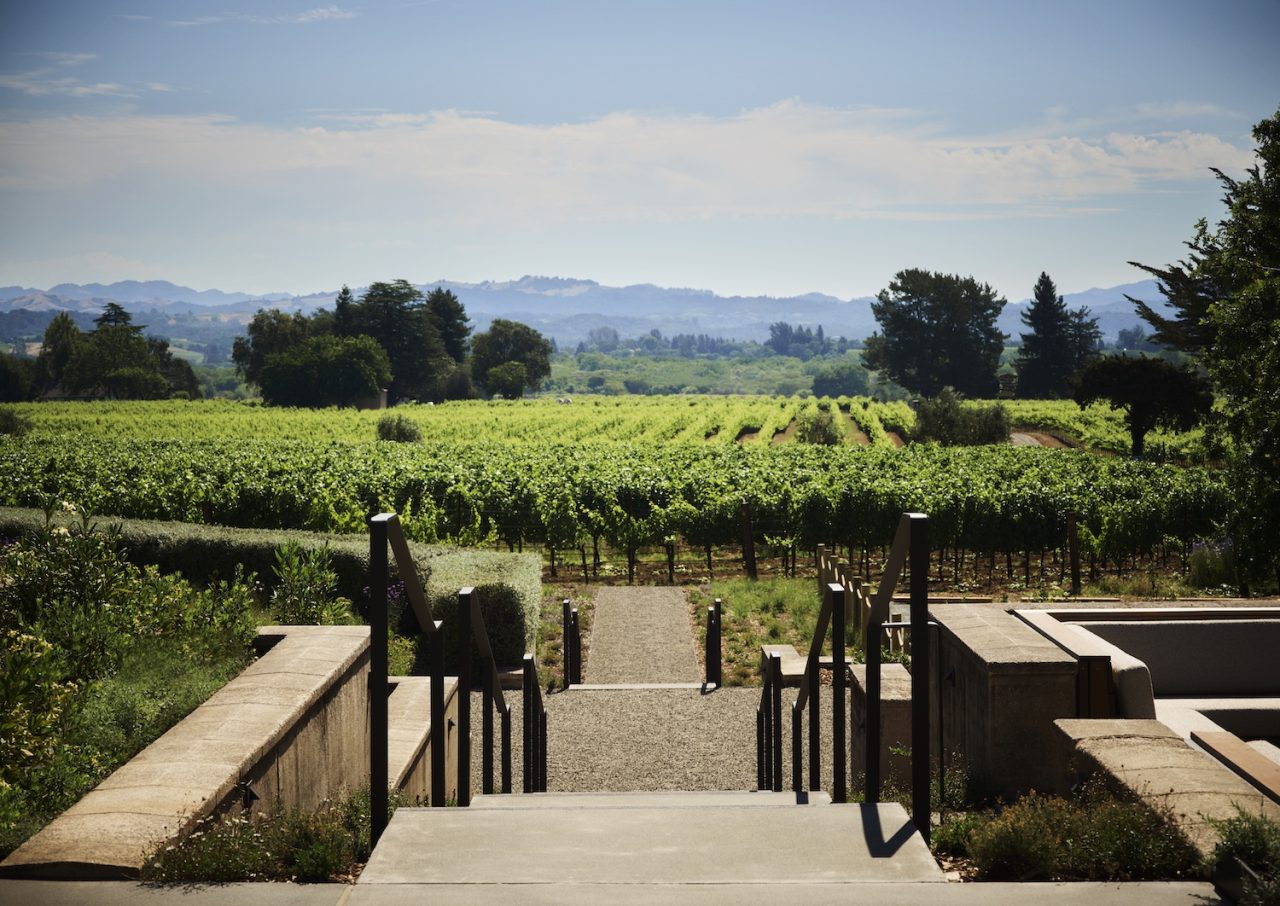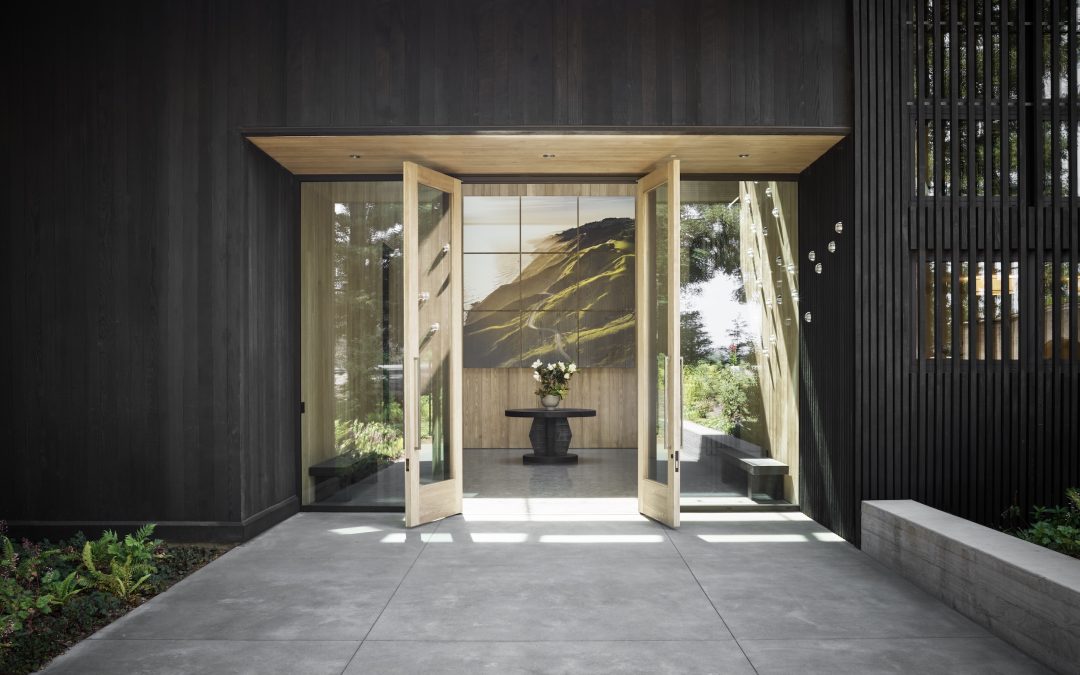This resort-style guest venue is dedicated to wine, food, & the natural landscape breathes life into a cherished local landmark in California. Located minutes from downtown Healdsburg, in the heart of Russian River Valley, and originally built as a winery in the mid-70s, the facilities on this 5.5-hectare estate had deteriorated and become outdated. Long known for its rustic charm and authentic connection to nature, the site held promise.
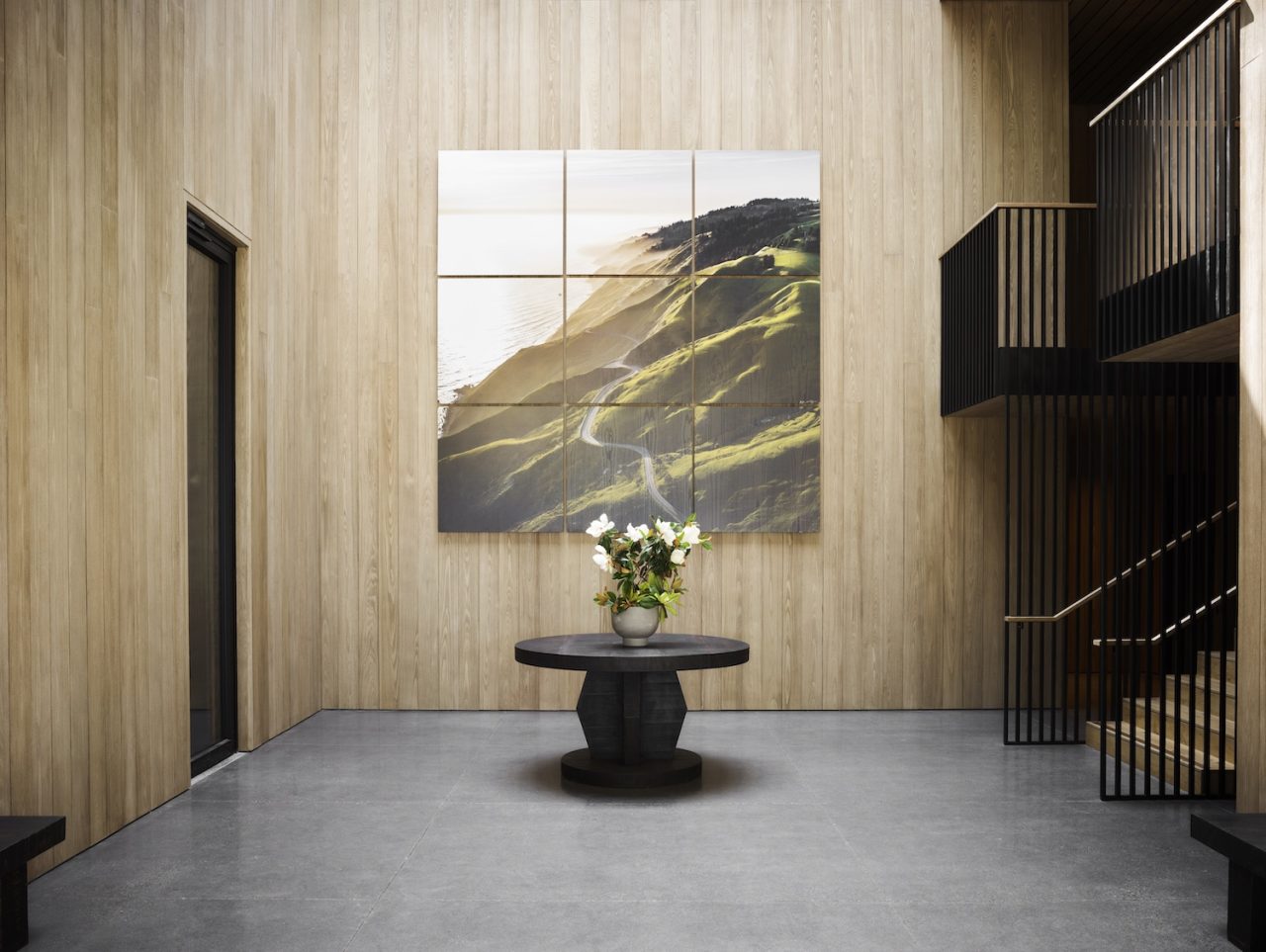
As it were, Flowers Vineyard & Winery was looking for a venue to showcase their sustainably produced wines within a setting that expressed their nature-based ethos. Opportunity met serendipity to become a deliberate union of context and intent, and to become a home for Flowers’ hospitality house.
The challenge was how to evolve the existing collection of facilities and preserve the natural legacy while ensuring that the venue could meet the expectations of today and become a destination in its own right. ‘Our approach was deceptively simple,’ says Brooks Walker, principal at Walker Warner Architects: ‘Let nature dominate and use architecture to frame the experience. Ultimately, it’s about the experience of this place.’
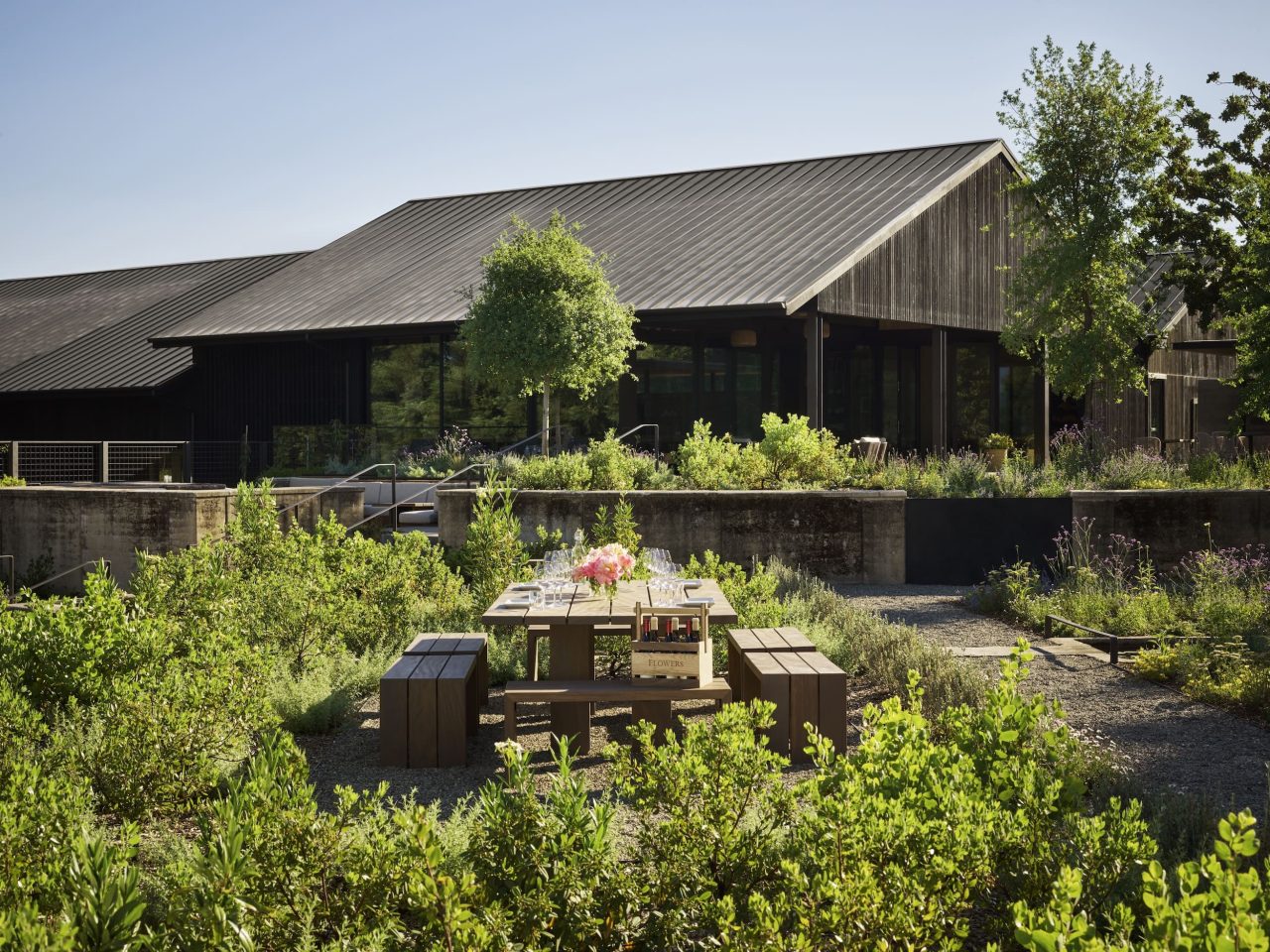
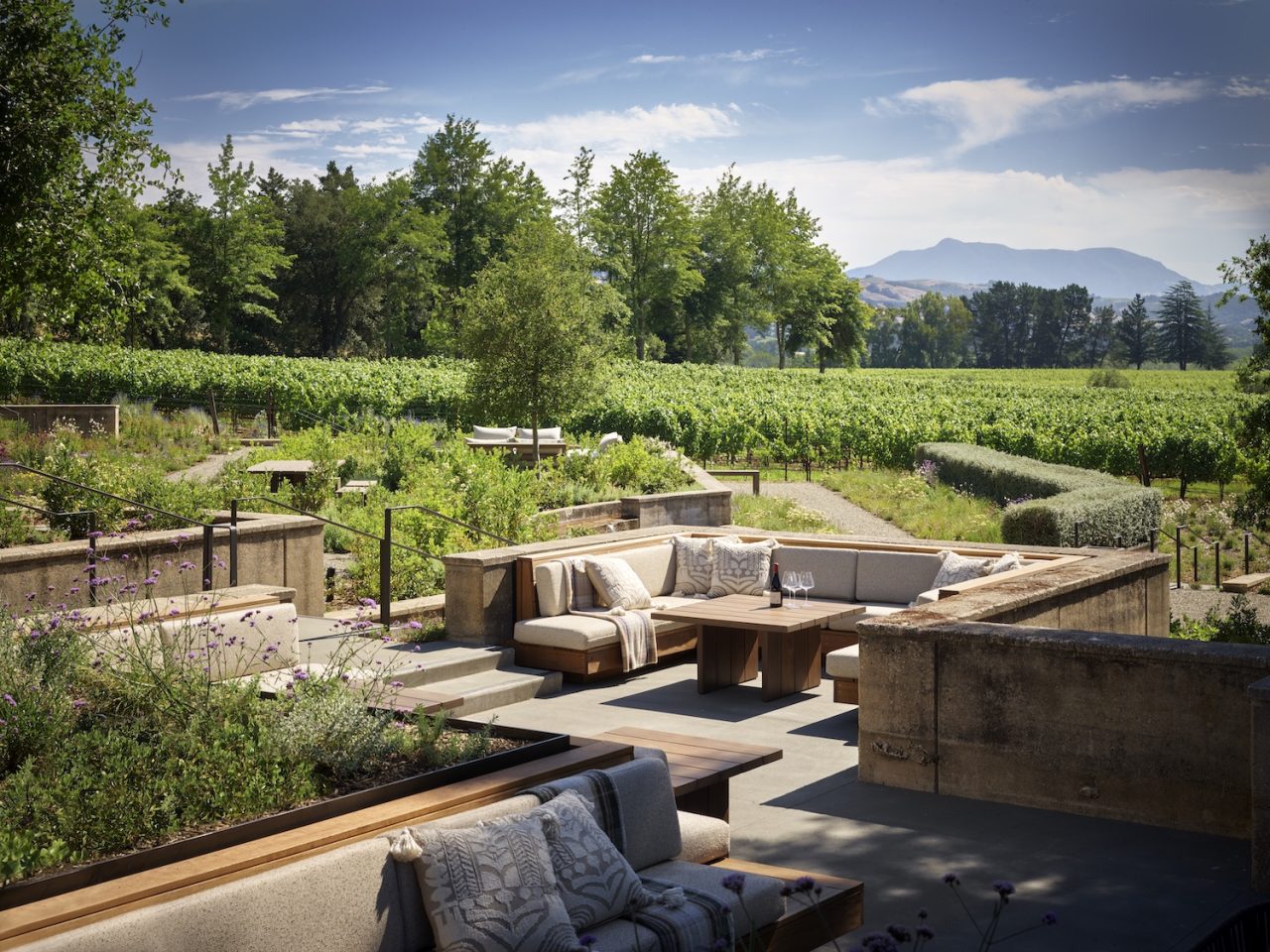
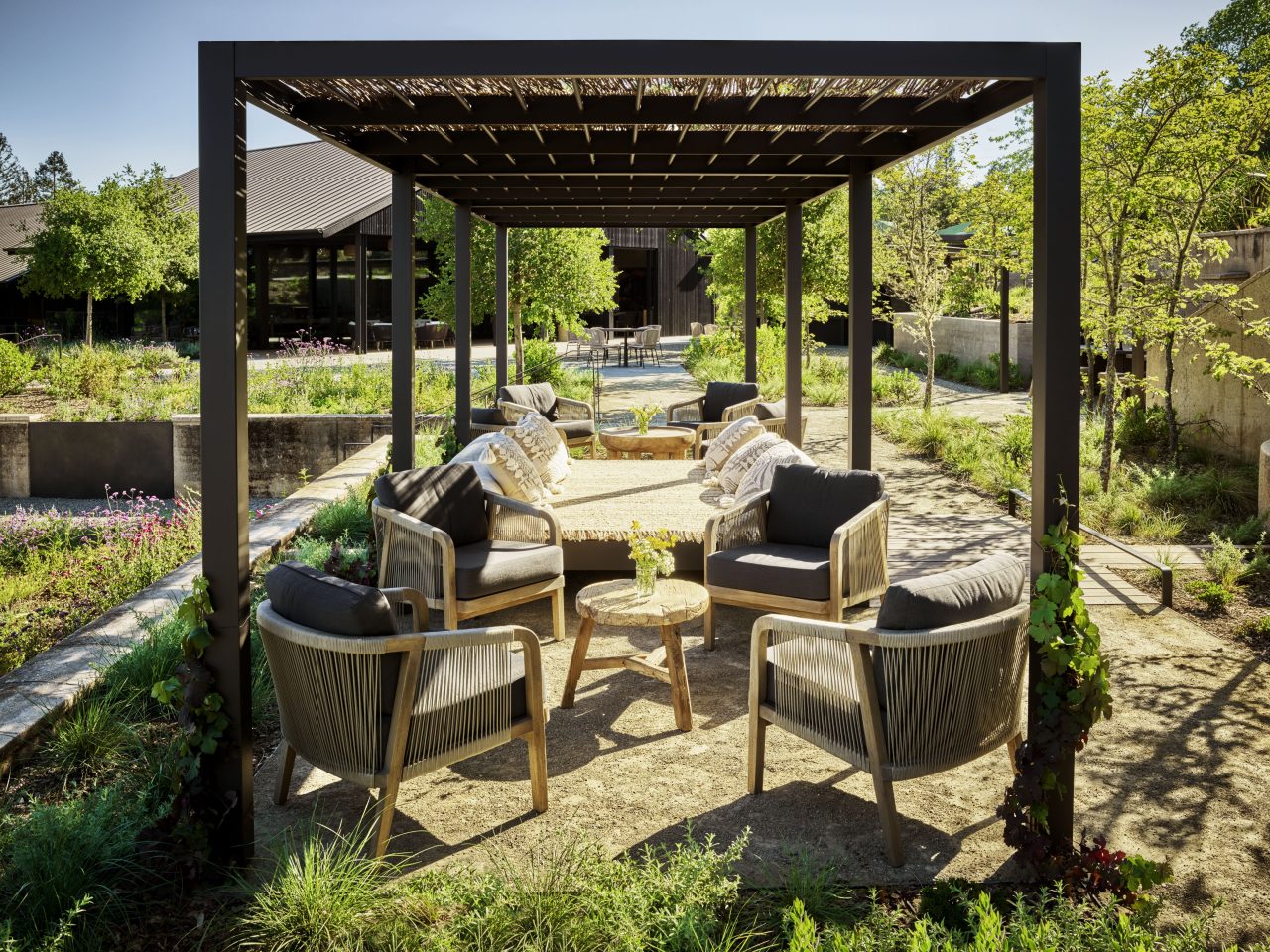
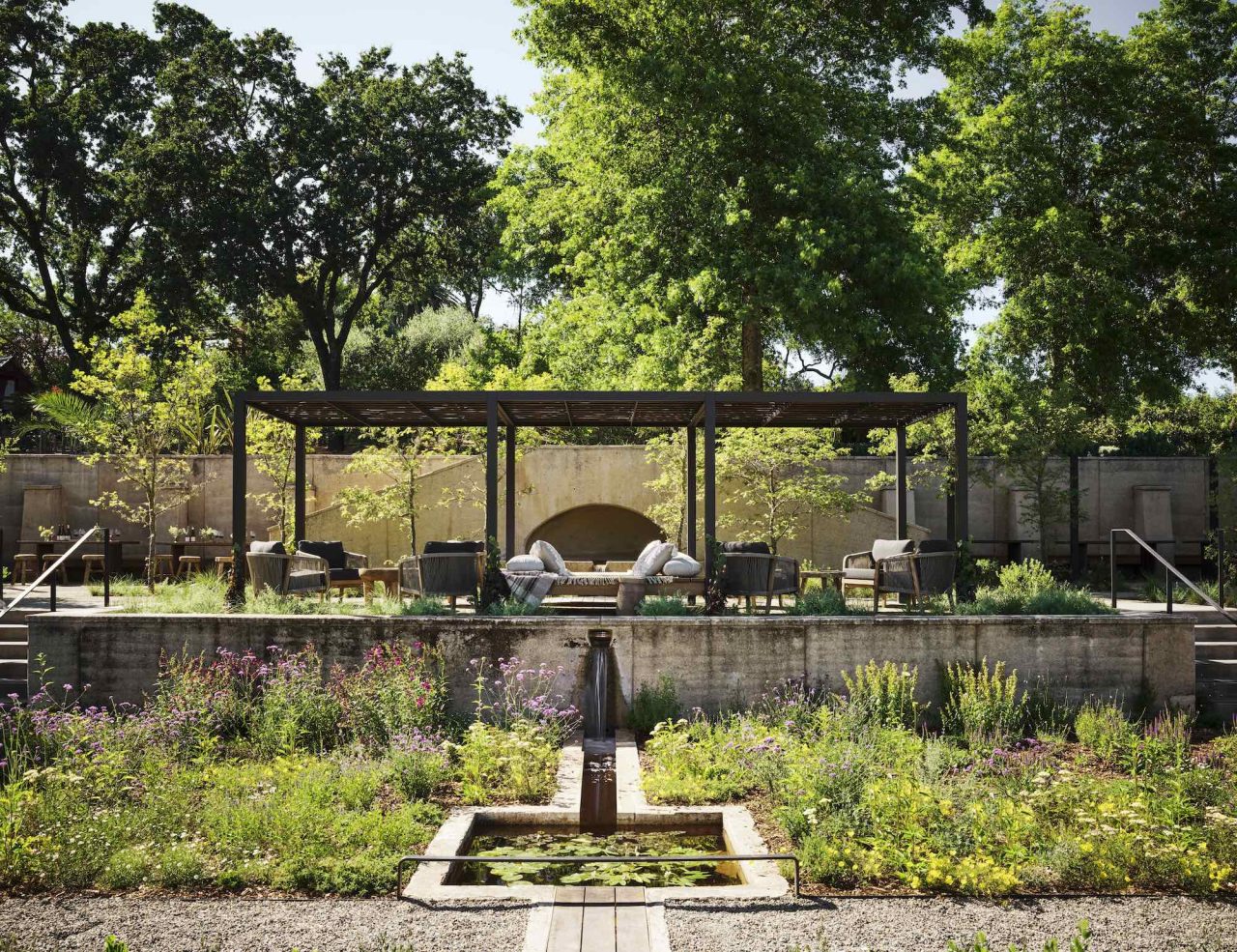
Set within a redwood grove, the existing buildings were largely disconnected from their rich landscape. The strategy was to find ways to reconnect visitors to the landscape and reimagine what was a series of simple industrial buildings.
This reinvigorated journey began by investing the site with a sense of orientation. New pathways lead visitors from the parking area to the updated visitor center. Previously a warehouse, the new hospitality house provides guests with an orientation to the site and introduces the Flowers’ story.
It begins with the entry sequence through a grove of redwoods which leads you to the building with its dark stained exterior skin that’s nestled in the shadows. After moving along the path, the main entry’s glowing interiors of bald cypress siding serve as a beacon that calls the visitor inside. After being greeted, you walk up the open-framed staircase and as you rise, the gardens and the dramatic views across the vineyards are framed and finally revealed, drawing you out into the landscape.
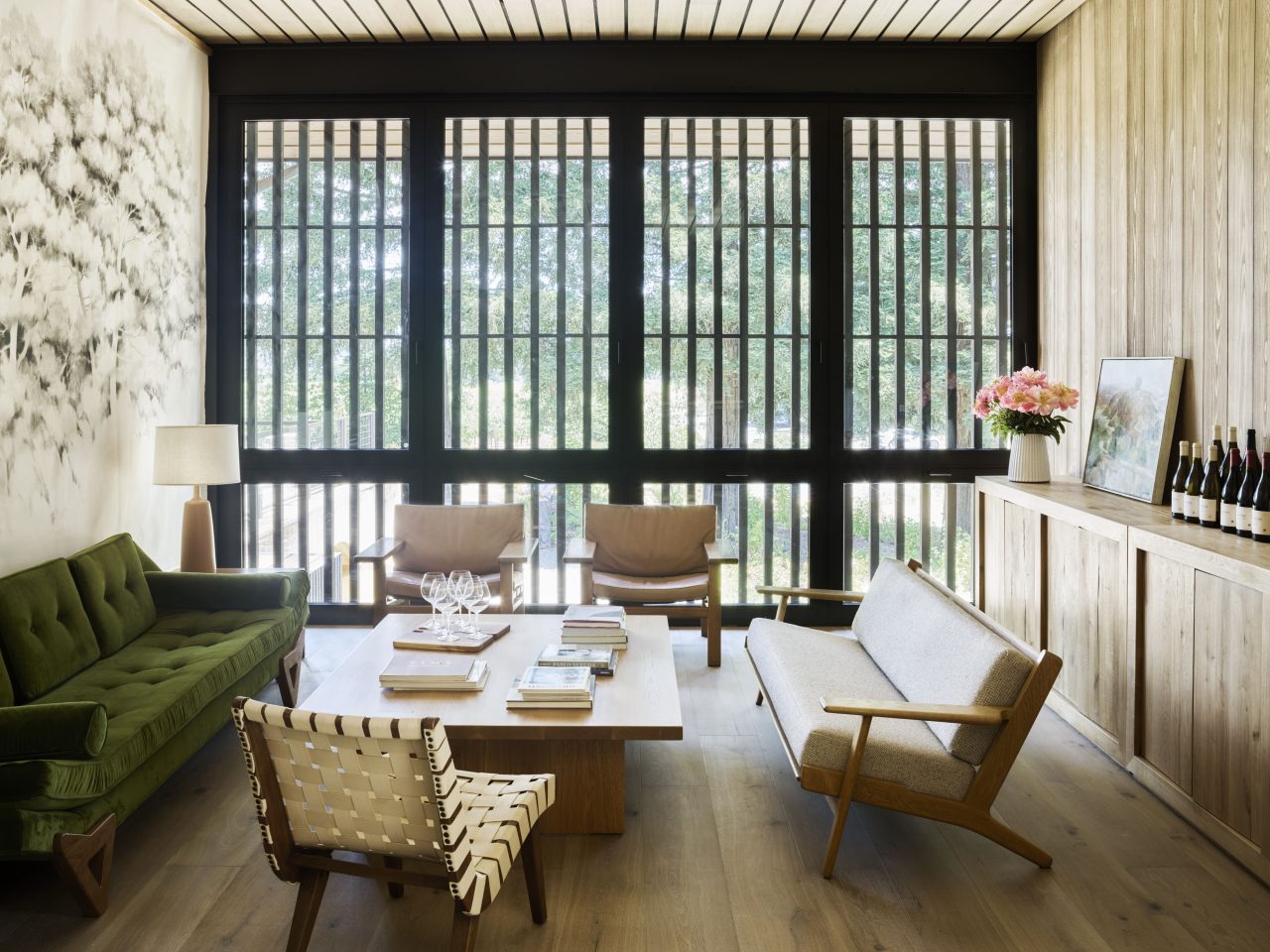
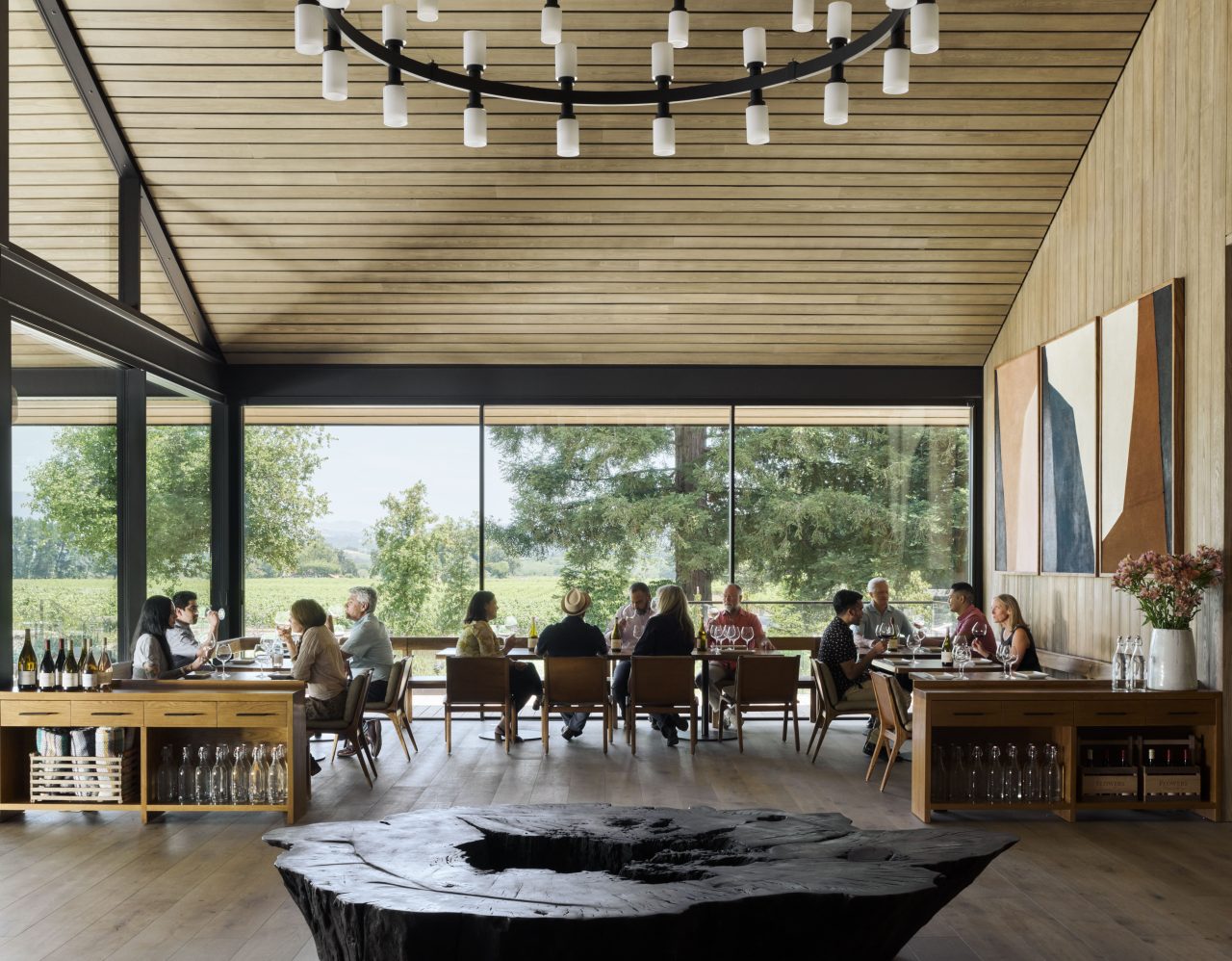
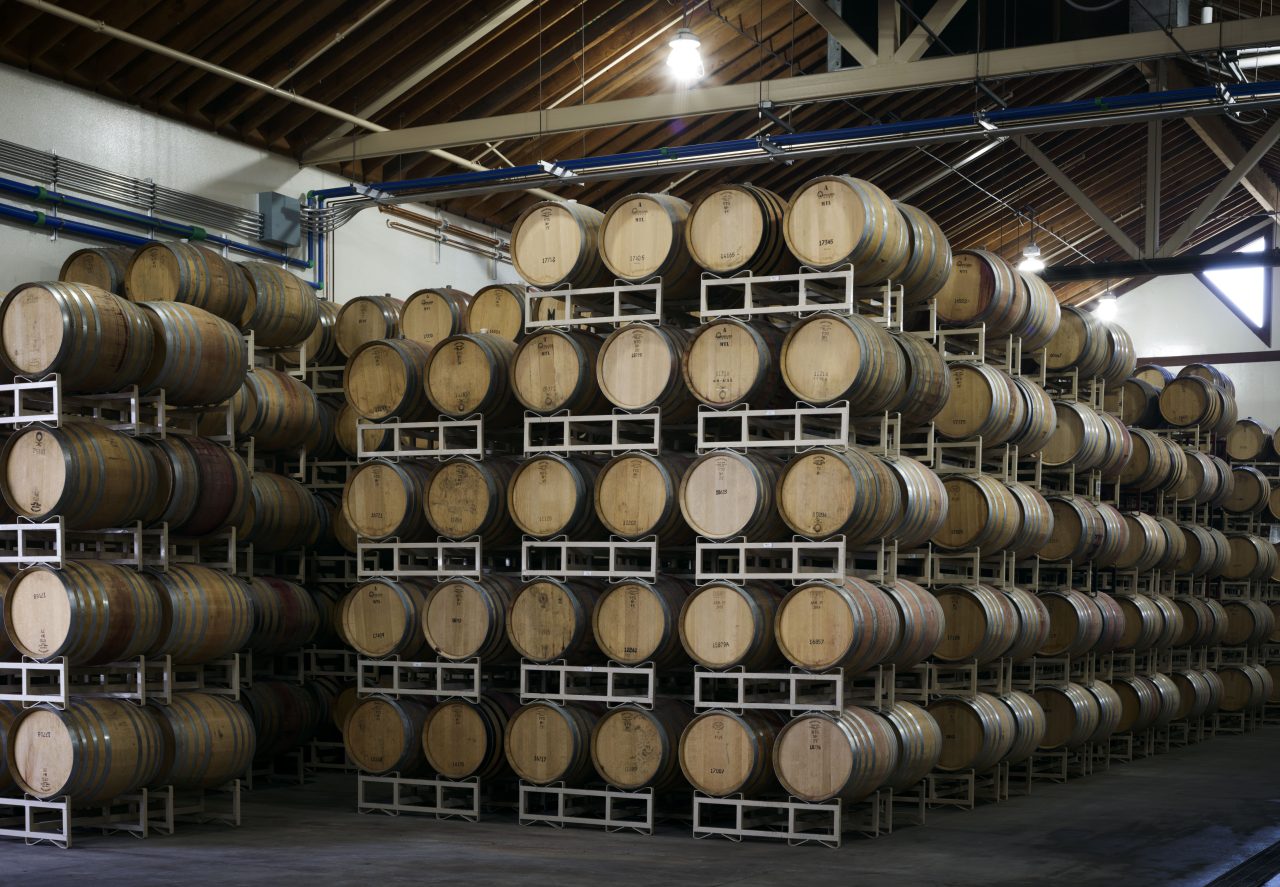
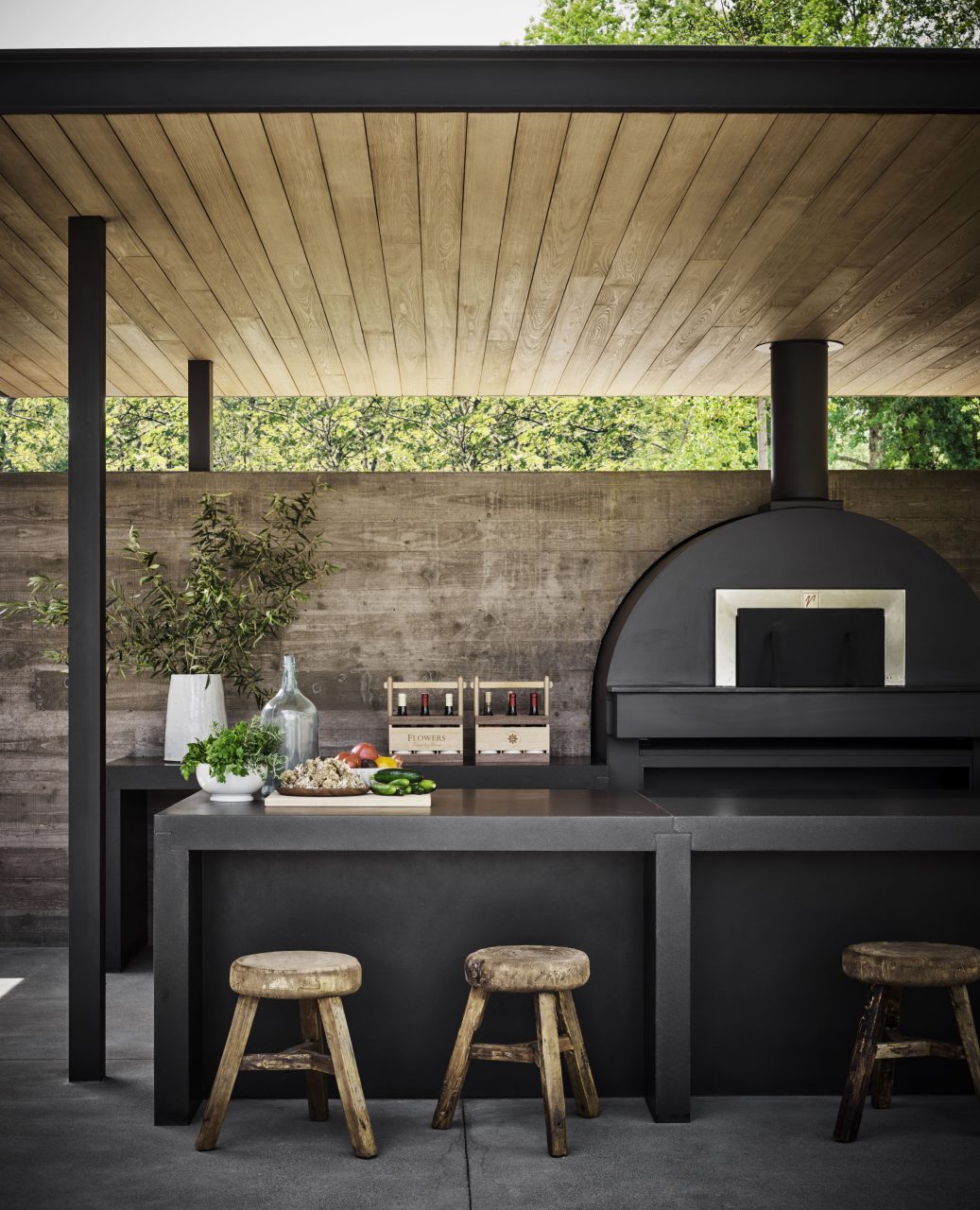
As with the other existing on-site structures, the 1,460-square-metre hospitality house has been stained a shadowy black – inspired by the deep shade of the surrounding redwood grove – to help the buildings recede into the site and allow the landscape to become the focus.
Thereby remodelling the existing structures rather than building anew aligned with the Flowers’ commitment to sustainability. The approach, which enabled most of the original structure to be ‘recycled,’ gave focus to the design efforts, elevating what was already present.
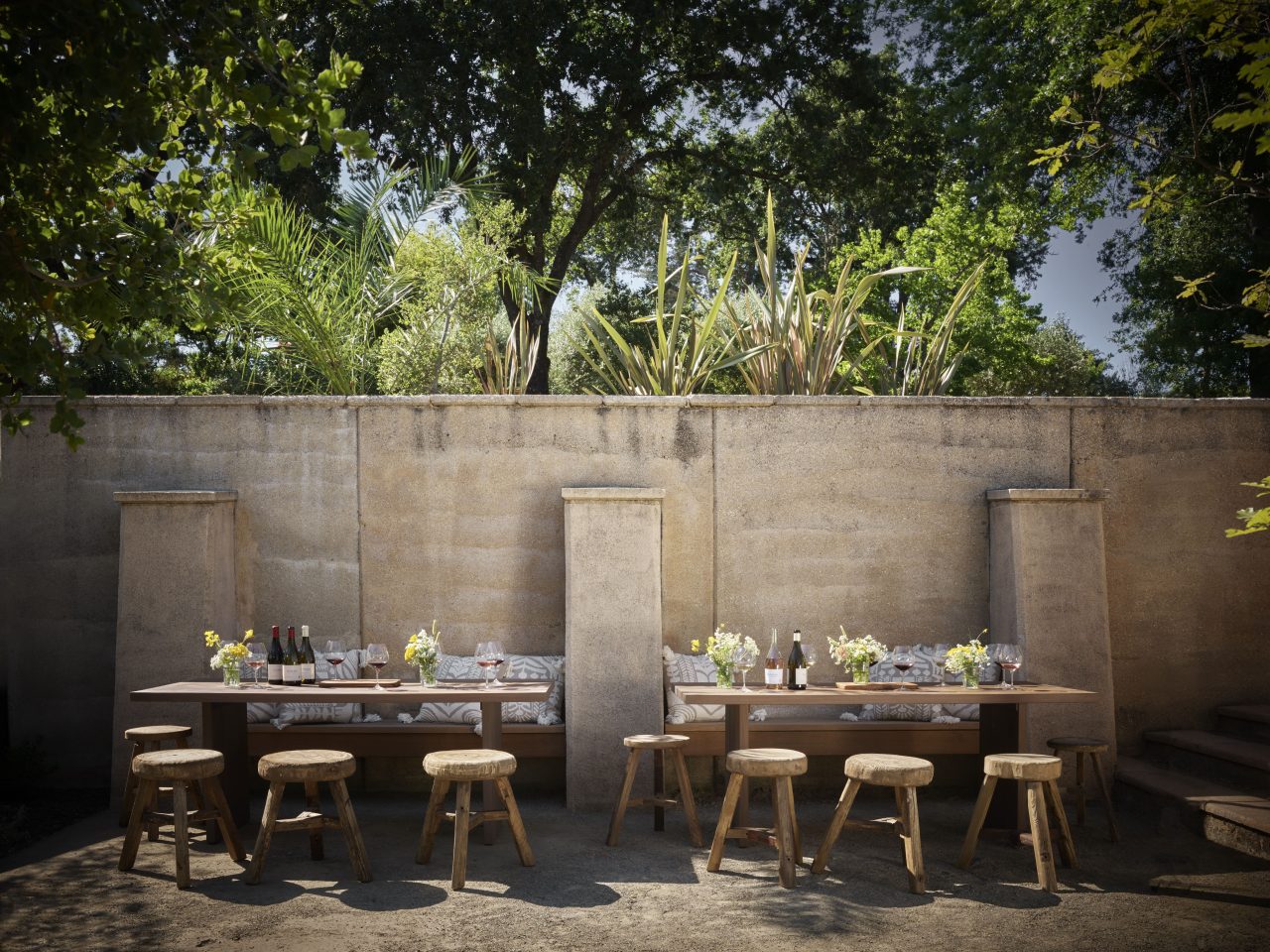
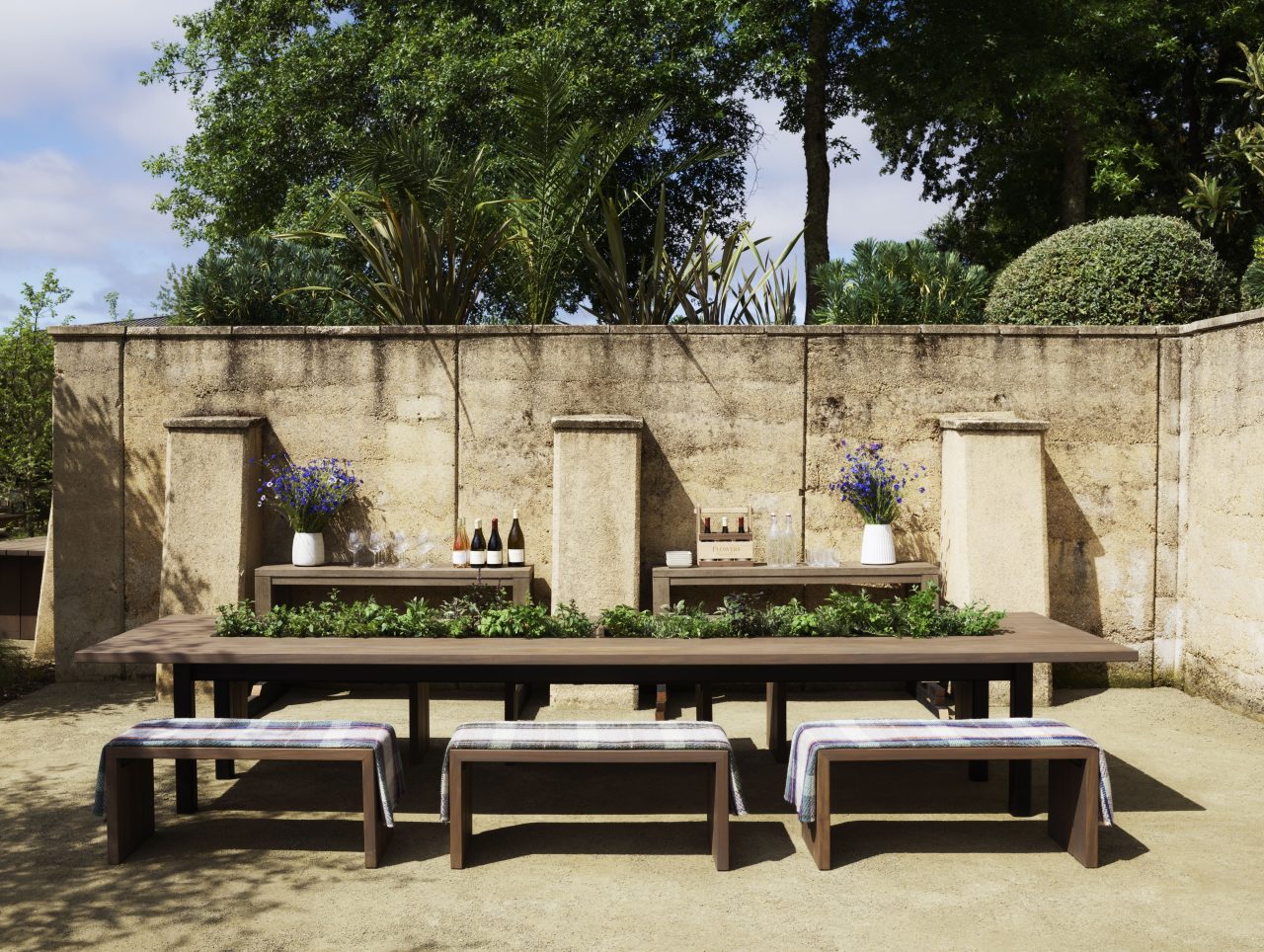
Passive energy strategies – low-cost, high-impact – were maximised and included taking advantage of daylight (skylight and large windows) and shade (exterior wood slats serve as a veil, while the surrounding redwood grove offers additional shade).
Sustainability is reinforced through several large, monumental functional wood installations made of salvaged logs by artist Evan Shively.
Tucked discreetly into the landscape, the transformation involved adding a pop-up element at one end of the single-story hospitality house.
The addition knits building with topography, resulting in a multi-level facility that preserves the modest vernacular forms while providing seamless access to the stunning views and gardens afforded by the hilltop. In the terraced planting strategies, the visitor is immersed in distinct California ecologies: Redwood Forest, Oak Woodland, and Chaparral landscapes, with the vineyards and distant ridges of the Mayacamas Mountains on the horizon.
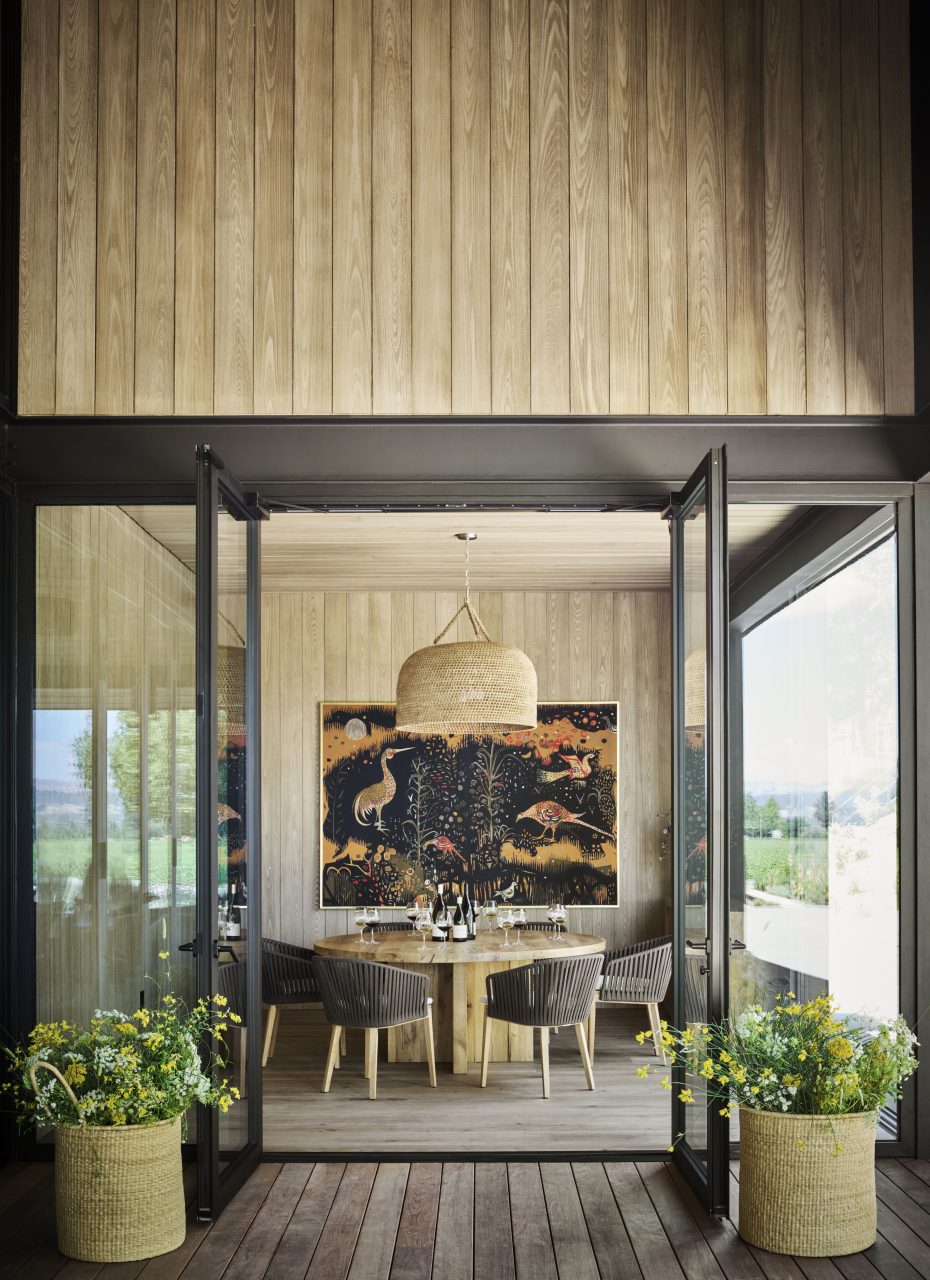
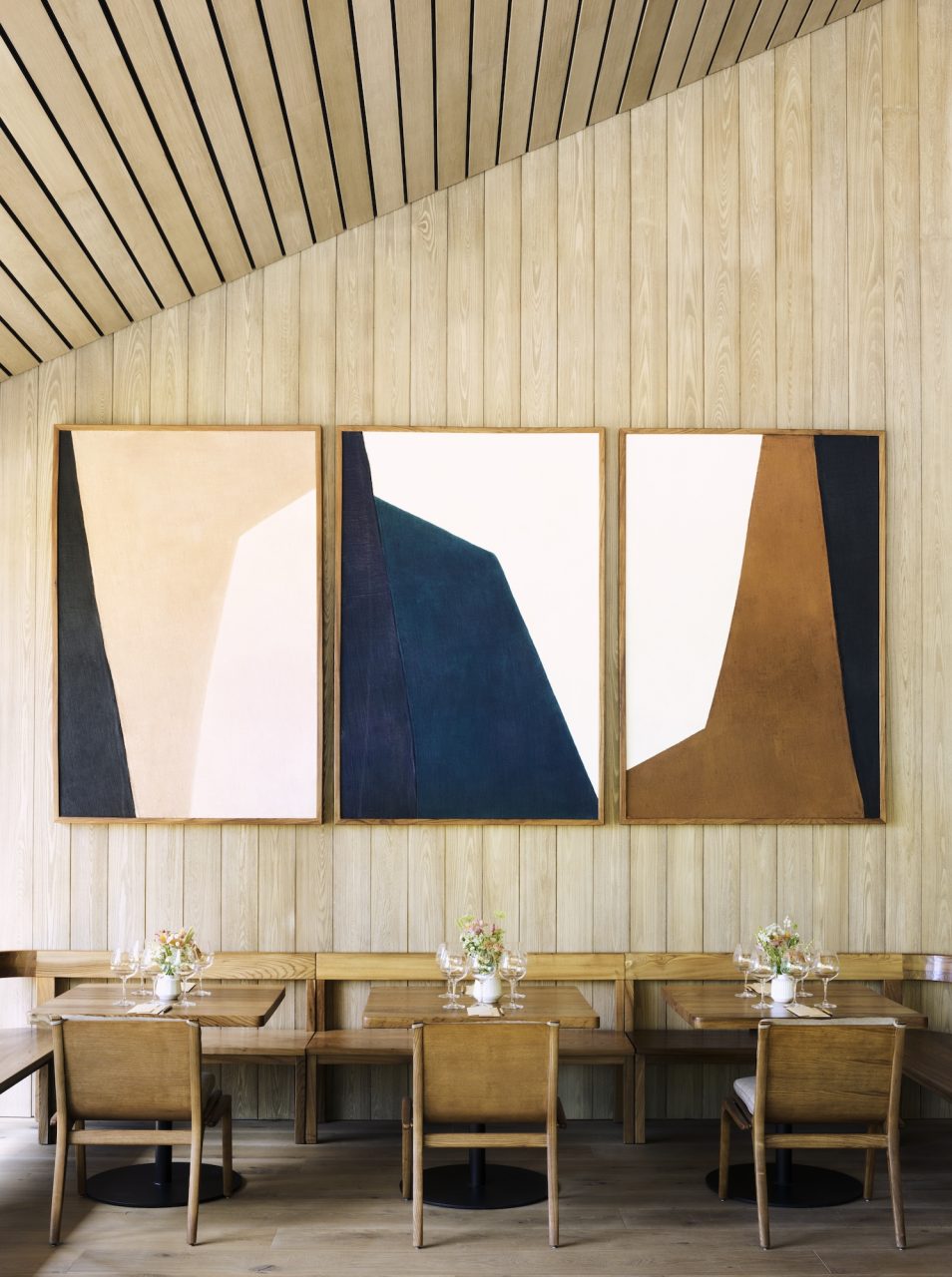
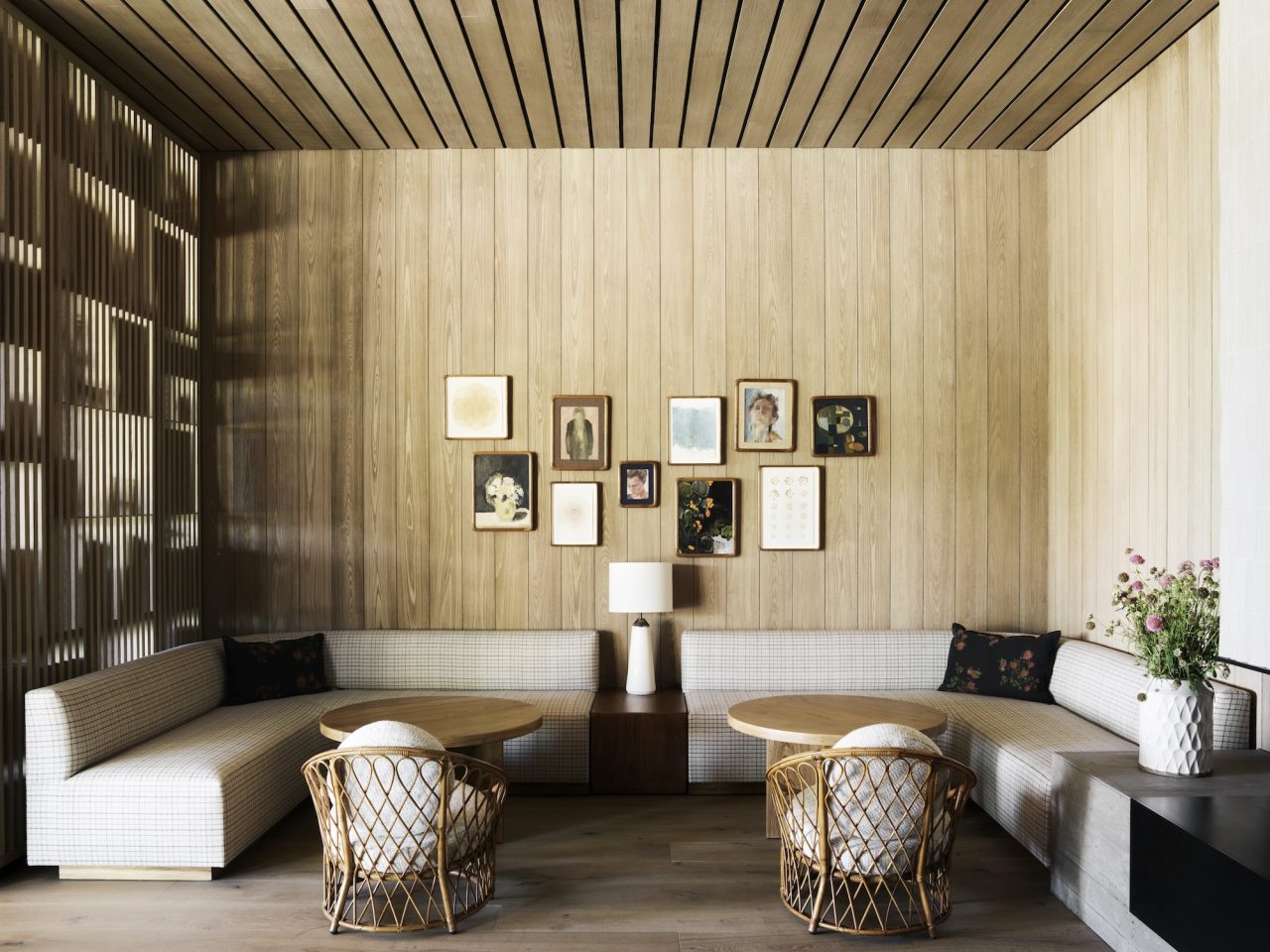
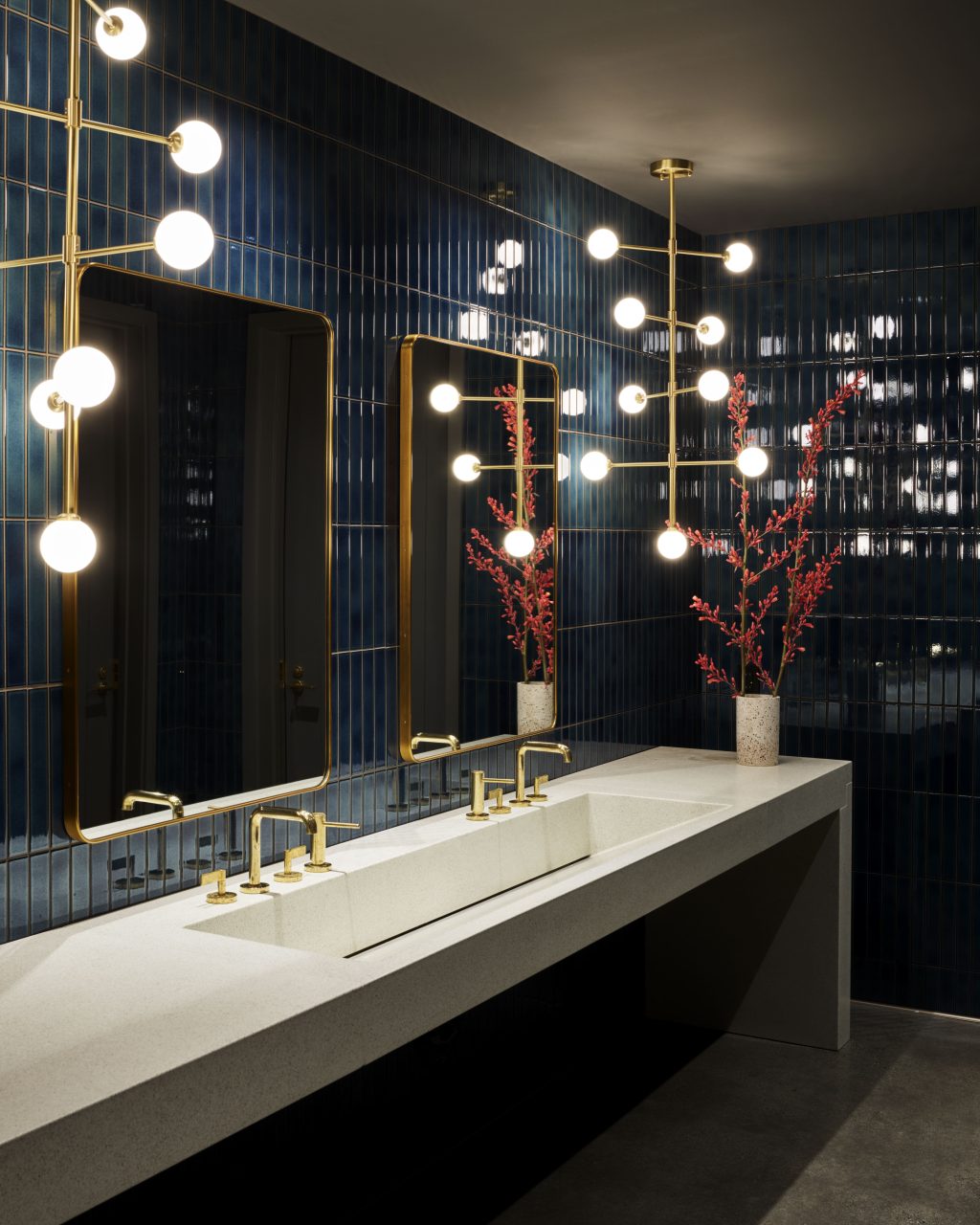
The airy hilltop structure serves as a transition to the spacious gardens and provides sheltered seating and amenity spaces, including an outdoor wood-fired oven. The interiors are bright thanks to bleached cypress siding, completing the yin-yang (dark-light) relationship of outside to inside. ‘The architectural expression is understated,’ notes Mike McCabe, principal at Walker Warner Architects: ‘It isn’t about making a statement. It’s about creating a place that can unify the values that are important to the Flowers’ brand – celebrating nature and local context with what’s important to the site and the community.’ The desire, note the Flowers owners, was to ‘create an environment where guests feel like they are entering our home, experiencing wines crafted without compromise and shared without pretension.
Guests can experience a variety of intimate gatherings areas to savour Flowers’ Sonoma Coast wines both inside as well as outside. Upon entering, you are led to the second floor, which includes the sunroom, the dining room and living areas as well as more private spaces for VIP guests.
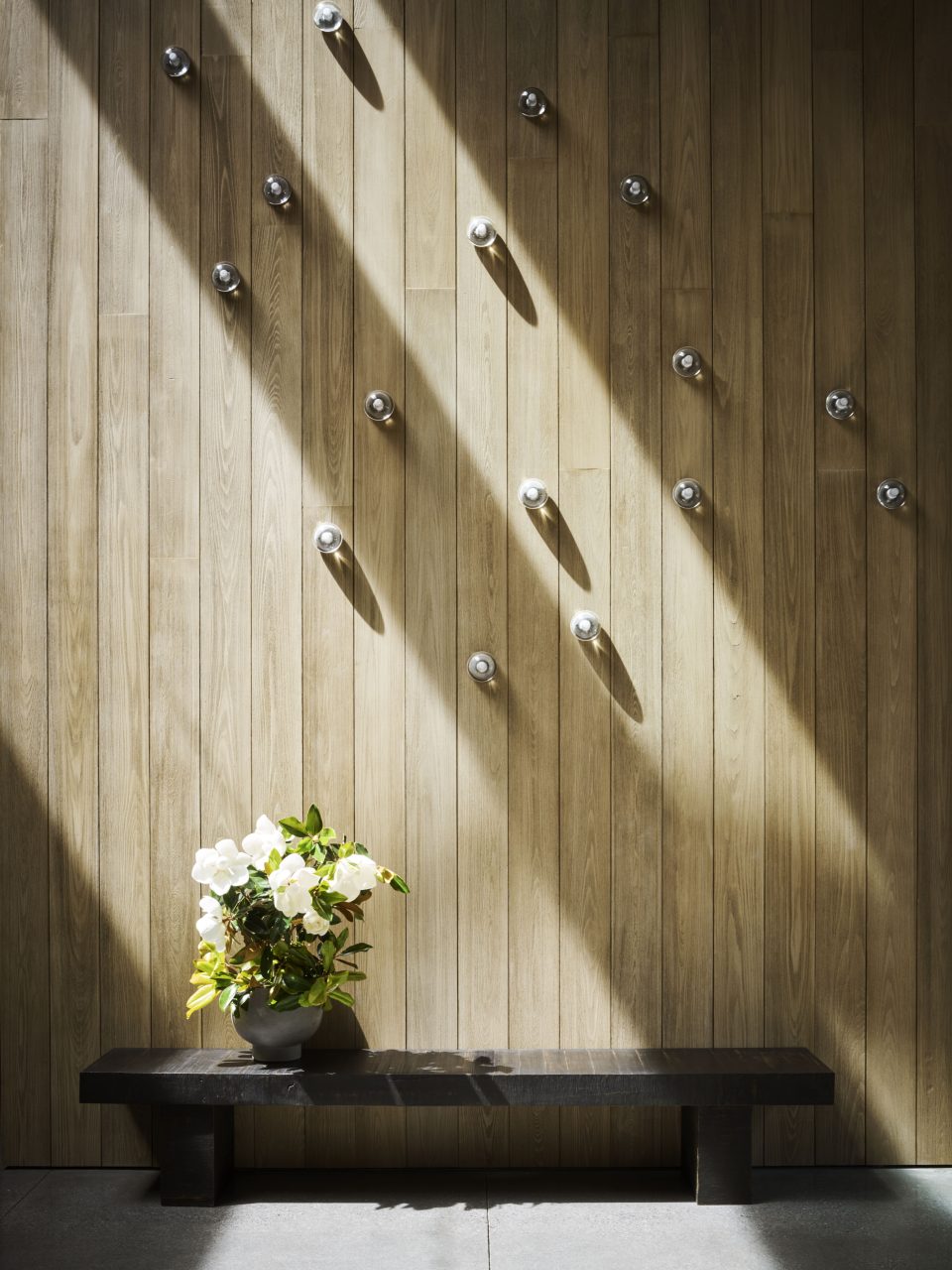
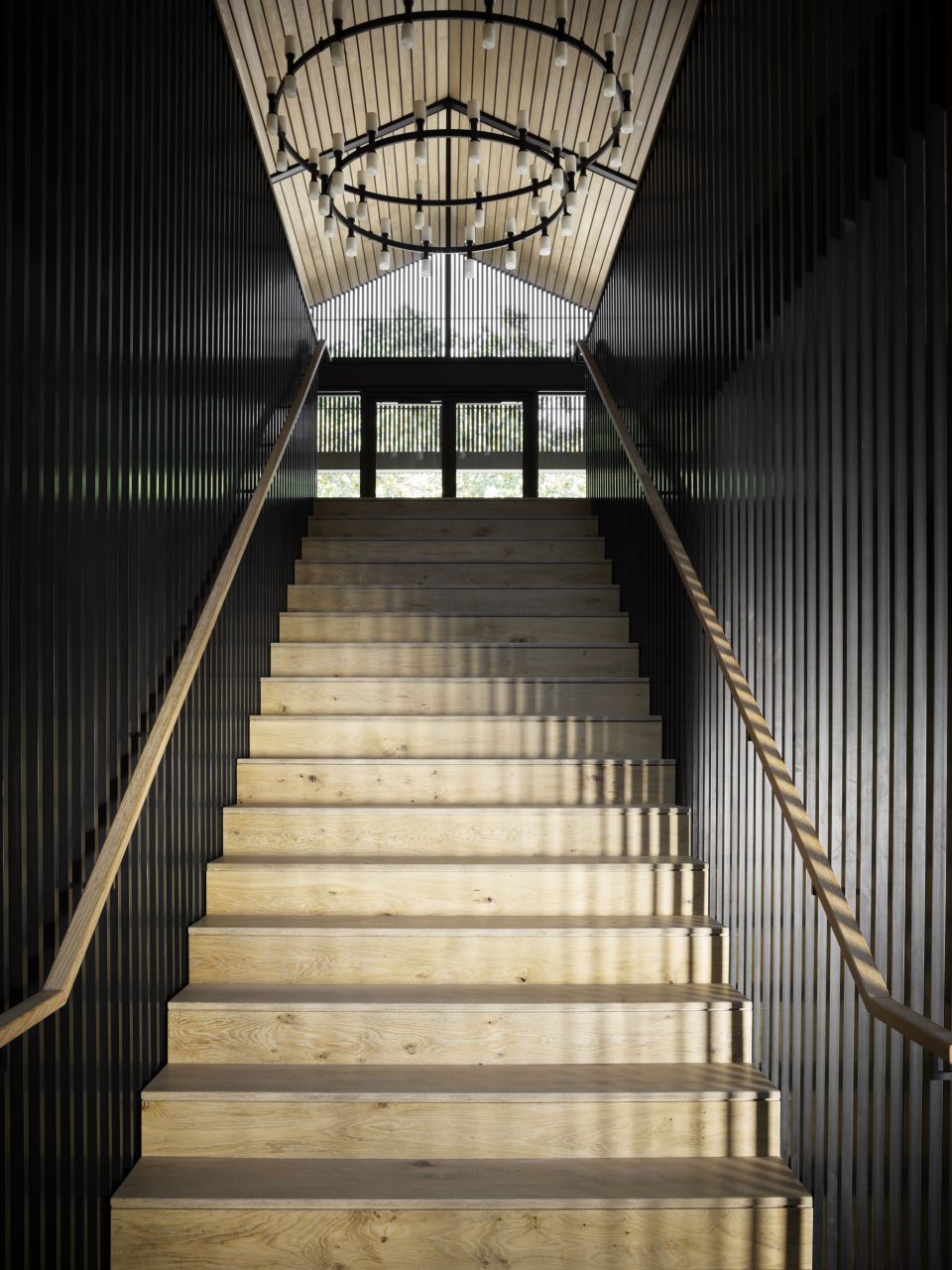
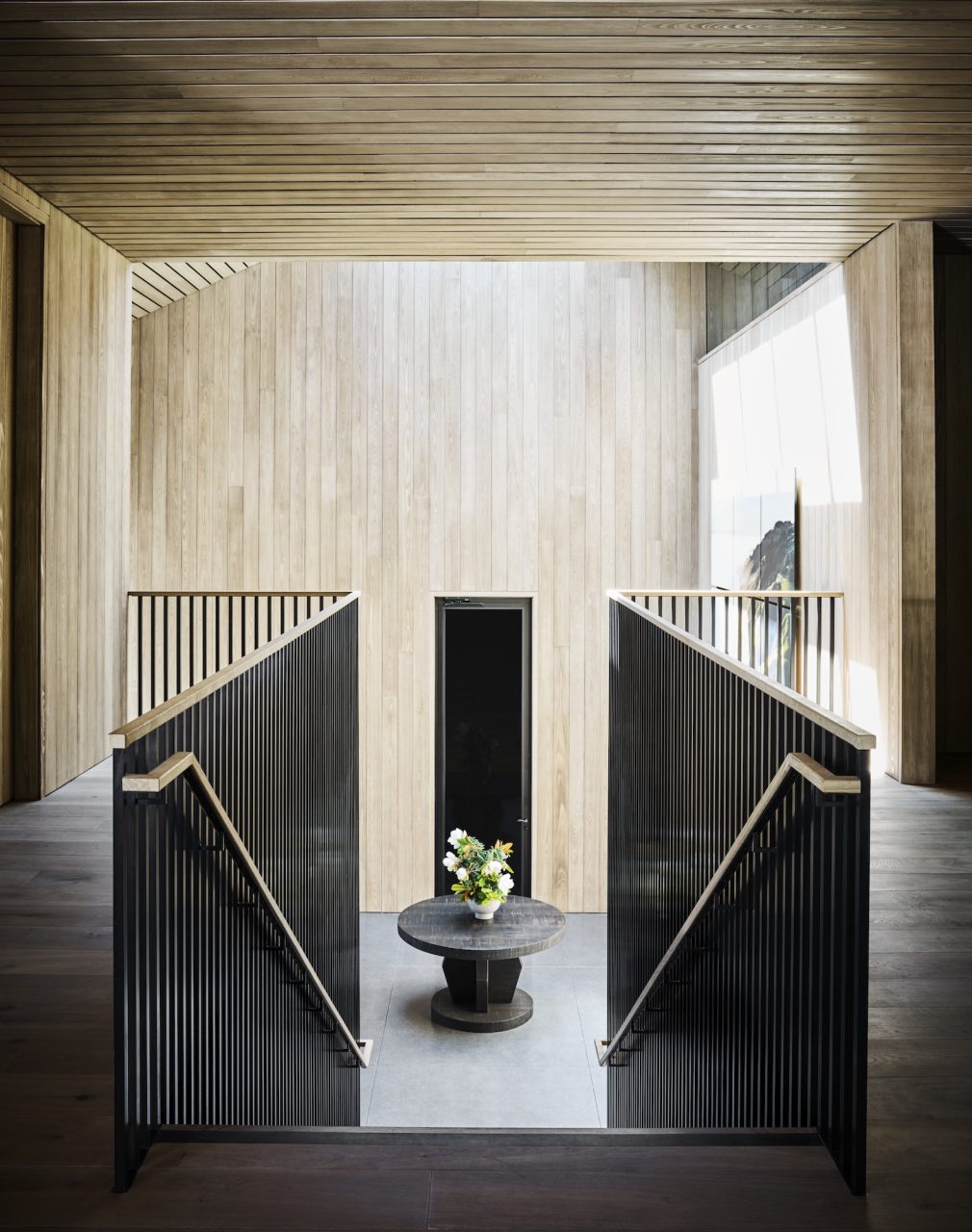
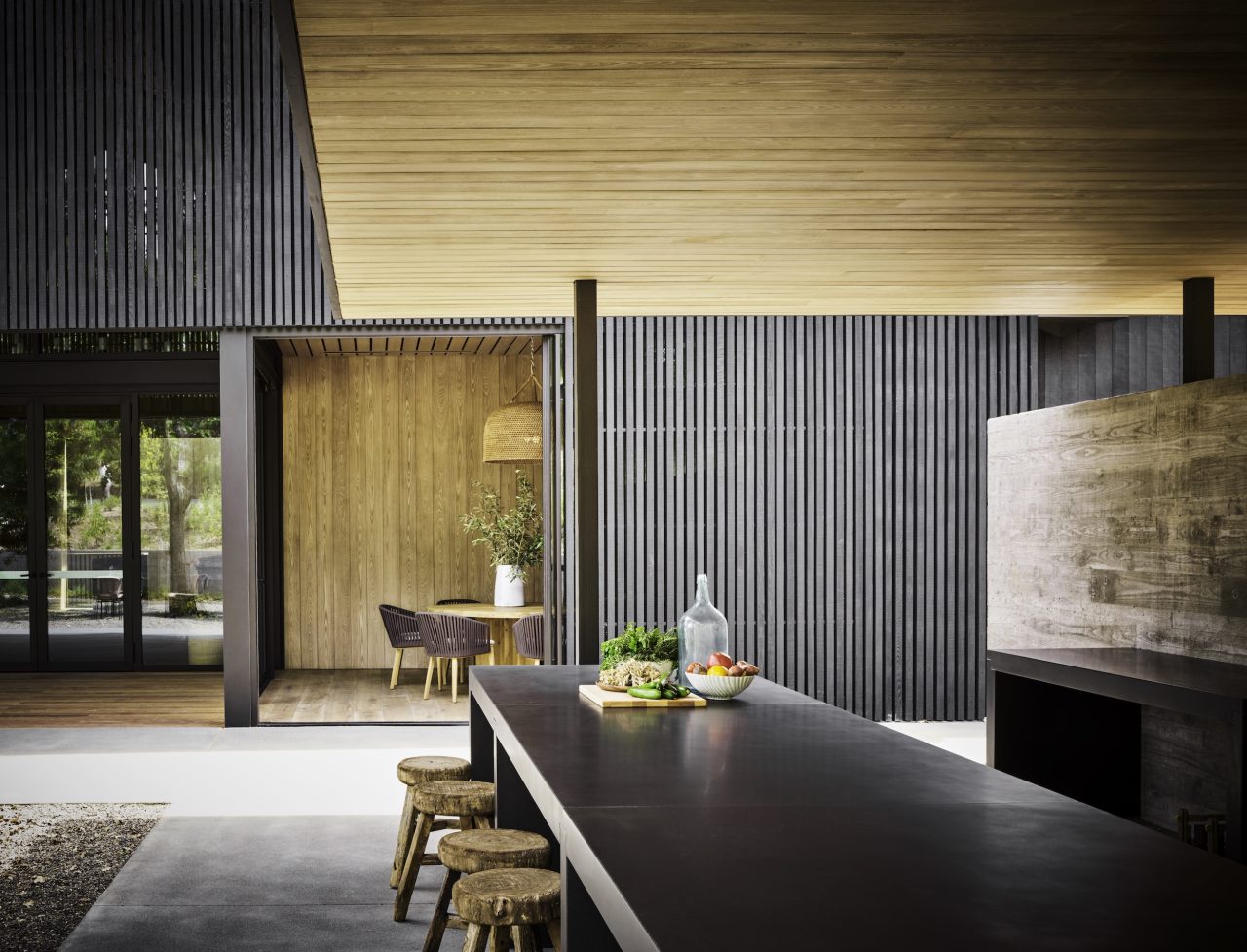
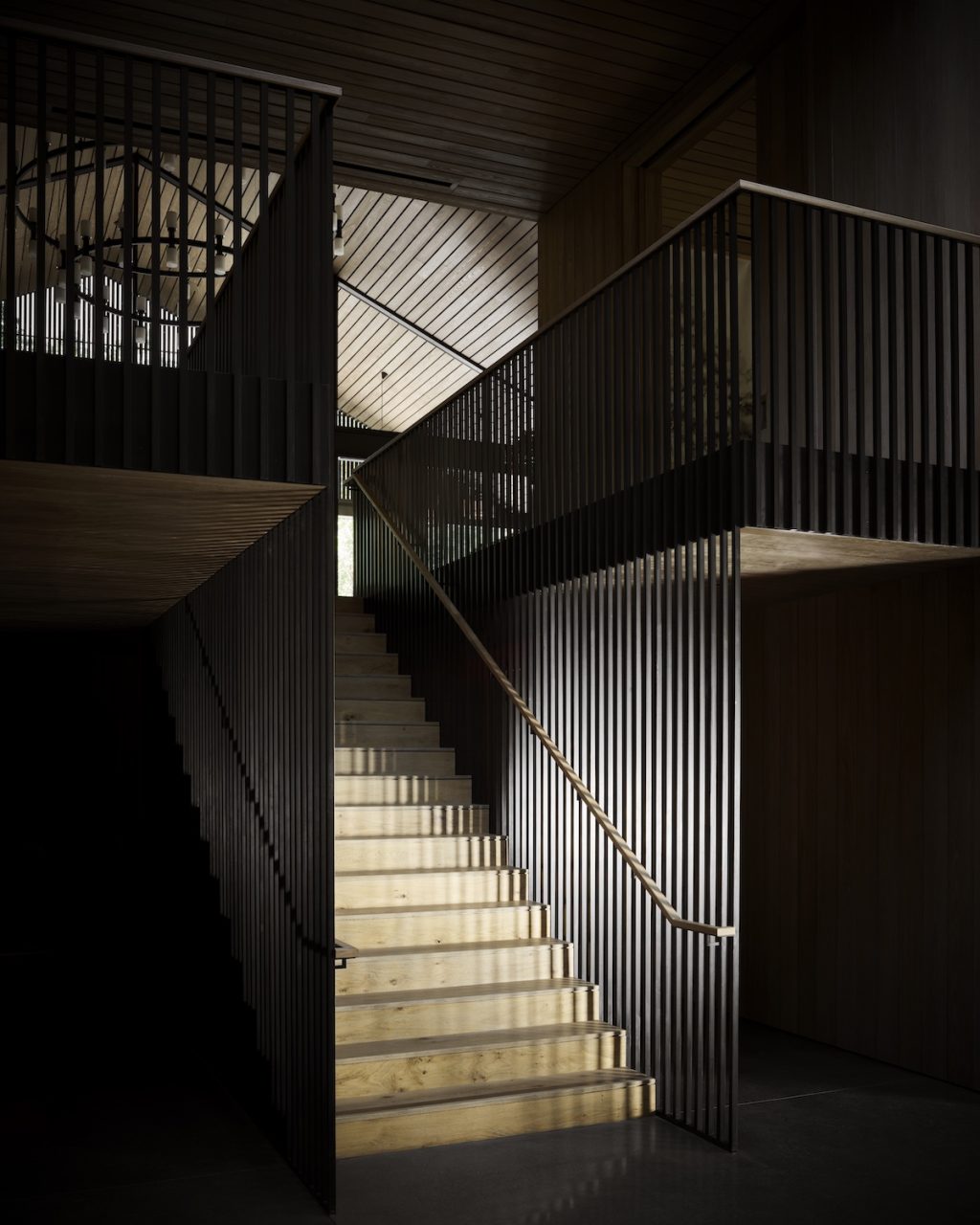
The gardens, framed by existing refurbished rammed-earth walls, bring the experience into sharper focus, unfolding as a series of quiet eddies intended for gathering, tasting wine, and celebrating nature.
The site occupies the boundary between the gridded vineyard and agricultural fields of the Russian River and is situated amongst the oak-grassland foothills leading up to the coastal redwood forests that surround Flowers’ estate vineyards on the extreme Sonoma Coast.
The terraced gardens feature plant communities indicative of each surrounding ecological typology. New board-formed concrete walls were added to the landscape as needed, serving as a counterpoint and augmenting the series of exposed archaeologies.
Together, landscape and architecture combine to provide a quiet refuge, a place to celebrate community and friends through the experience of wine.
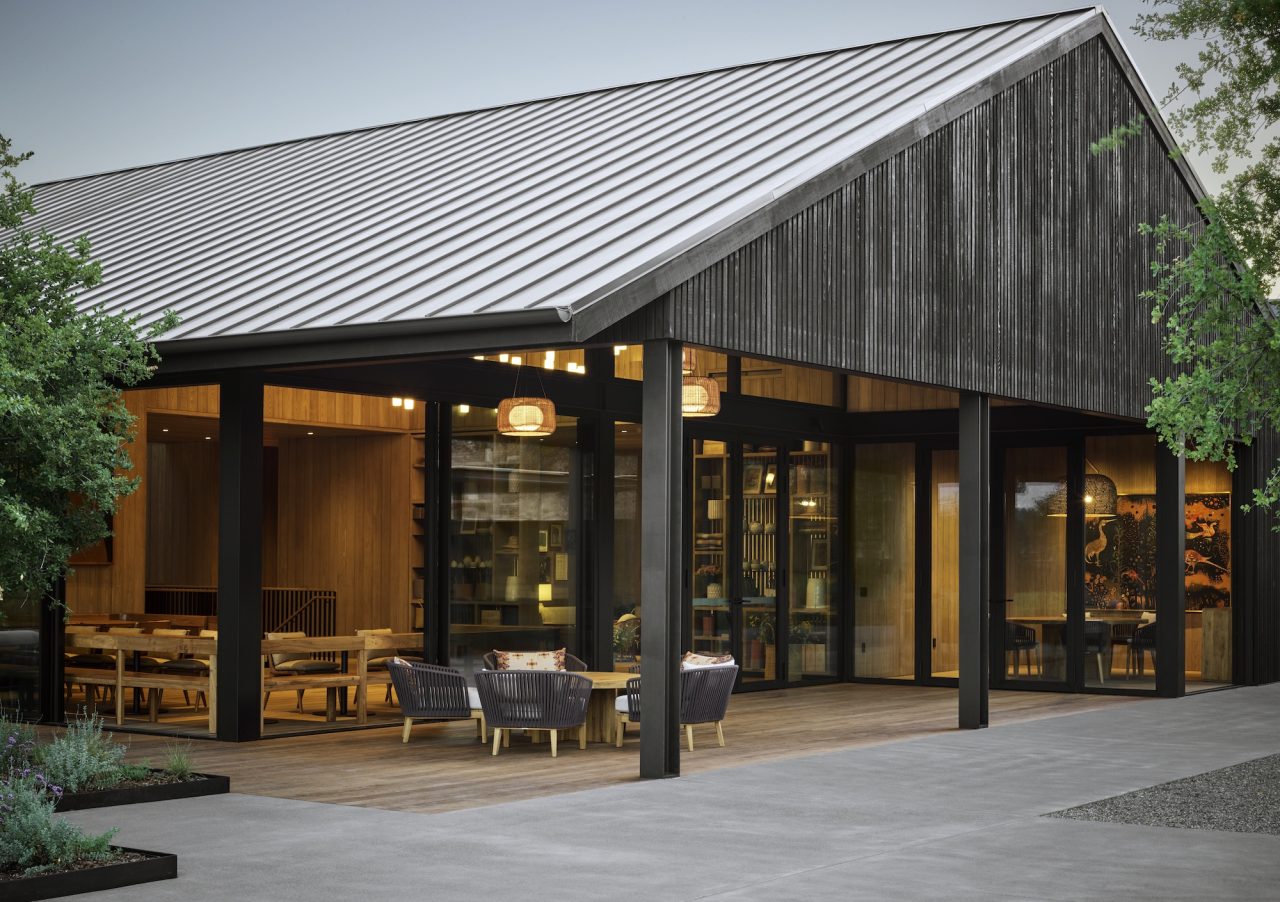
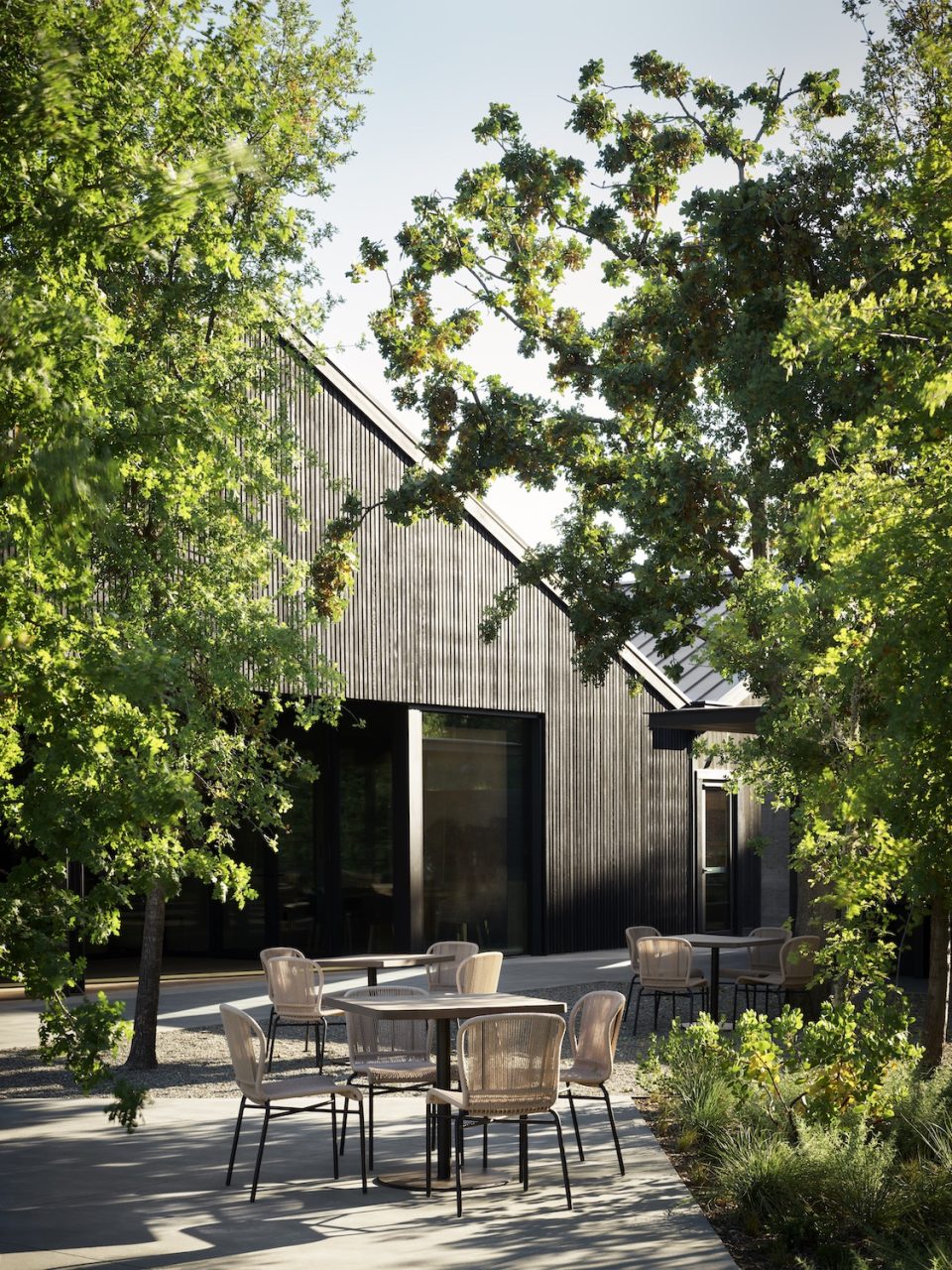
Walker Warner Architects Team
Mike McCabe: Principal + LEED AP; Brooks Walker: Principal + LEED AP; Sharon Okada: Senior Project Manager + LEED AP | Architectural Staff: Matthew Marsten, Hana Bittner, Darcy Arioli, Vivi Lowery
Project Consultant Team
Walker Warner Architects (architecture) | Maca Huneeus Design (interiors) | Nelson Byrd Woltz Landscape Architects (landscape architecture) | Alexis Woods Landscape Design (consulting local landscape architecture) | Anna Kondolf Lighting Design (lighting design) | Daedalus Structural Engineering (structural engineering) | Cello & Madru Construction Company (contractor) | Arborica (reclaimed wood) | Project photography by Douglas Friedman
